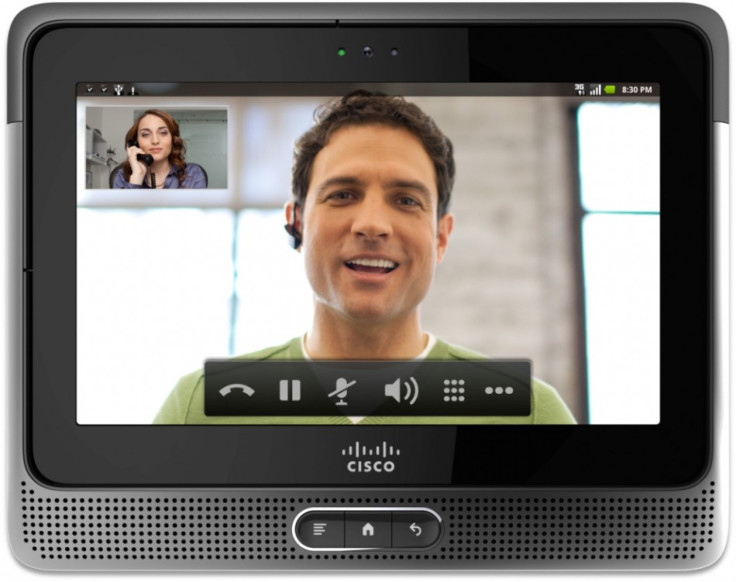RIP Cisco Cius (2011-2012): How Apple, iPad Claimed Another Tablet Victim
Analysis

The Cisco Cius, we hardly knew ye. Less than a year after the Cius hit shelves on July 31, Cisco announced on Friday (via company blog) that it will discontinue all investments being poured into its tablet designed for business and enterprise professionals.
Over the last year, Cisco has demonstrated a commitment to delivering innovative software like Cisco Jabber and Cisco WebEx across a wide spectrum of operating systems, tablets and Smart Phones, said OJ Winge, senior VP of Cisco's TelePresence Technology Group. We're seeing tremendous interest in these software offerings. Customers see the value in how these offerings enable employees to work on their terms in the Post-PC era, while still having access to collaboration experiences. Based on these market transitions, Cisco will no longer invest in the Cisco Cius tablet form factor, and no further enhancements will be made to the current Cius endpoint beyond what's available today.
Cisco primarily marketed its Cius tablet to the retail, healthcare, and government sectors -- even though iPads have dominated each of those industries -- hoping that professionals would be more trusting of Cisco's network services. But even though the tablet came with Verizon's 4G LTE connectivity, Cisco mainly pushed the Cius' voice, virtualization and video capabilities for effective collaboration over your tablet. However, the Cius could only shoot and transmit video in 720p HD; comparatively, the iPhone 4S, released three months after the Cius, shoots video in 1080p HD.
Cisco's uphill battle against the iPad was made even more difficult by the Cius' price tag. Compared to the basic $499 iPad, Cisco sold its 7-inch Cius tablet at the premium sticker price of $750. Beyond that, the tablet was not easy to get a hold of: Cisco did not readily advertise locations and retailers that offered the Cius on its own website.
The price may have been the Cius' ultimate killer, but the lack of entertaining features made this tablet all work, and no play. And to make matters worse, Cisco's own survey showed why the Cius ultimately failed: The rise of BYOD, or Bring Your Own Device.
Cisco's ISBG Horizons Study showed that, of the organizations surveyed, 95 percent of businesses allowed some form of BYOD, and about 36 percent embraced the BYOD concept to the extent that the companies offered to provide full IT support for any devices the employees brought into work. In other words, if businesses incentivize employees to bring in their own tablets from home -- iPads -- why would a company go to such lengths to buy an enterprise-centric tablet? Add the fact that it cost more than everyone's favorite tablet on the market, Cisco's Cius was doomed in a very fundamental way. Meanwhile, the iPad is soaring in both casual and professional settings because it has all of the best features of a work and entertainment tablet wrapped into one. Oh, and the price is cheaper, too.
Despite the failure of the Cius, Cisco says it will take what it learned from building the tablet and double down on software offerings like Jabber and WebEx, which are services that work on any device.
Experience matters, and Cisco is focused on empowering individual collaboration styles more effectively and securely, while providing the broadest choice of collaboration options based on preference, location, and device. Winge said.
Cisco had a good idea with the Cius, but the company had to fight too difficult of a battle to possibly survive. It was built for industries that encouraged BYOD, but those sectors were already in love with the iPad -- after all, it makes sense to have just one tablet that can do everything, instead of just one tablet for work, and one tablet for home. If Cisco ever returns to the Cius, hopefully it realizes that even businesses need to be cost-effective, and a $750 tablet with less features is not worth more than a cheaper tablet with more features.
The Cius is dead. Long live the Cius.
© Copyright IBTimes 2024. All rights reserved.






















